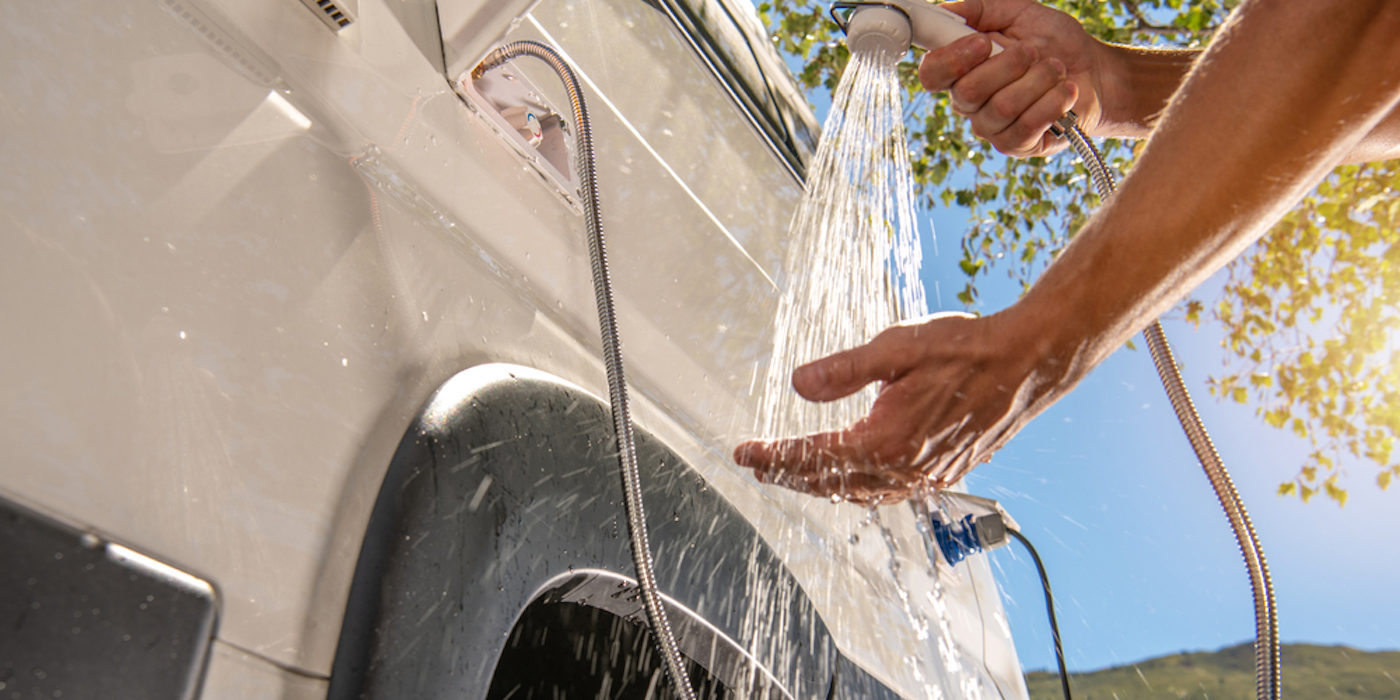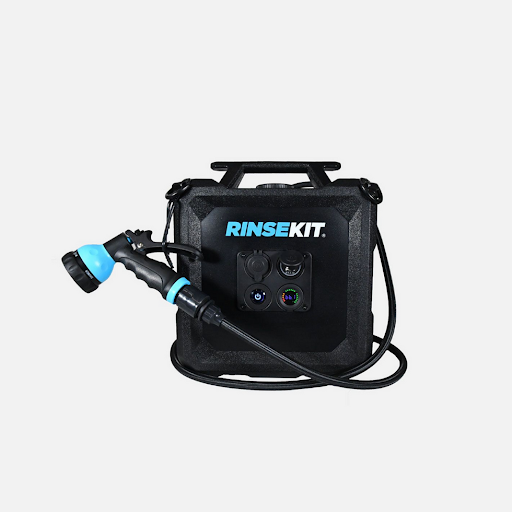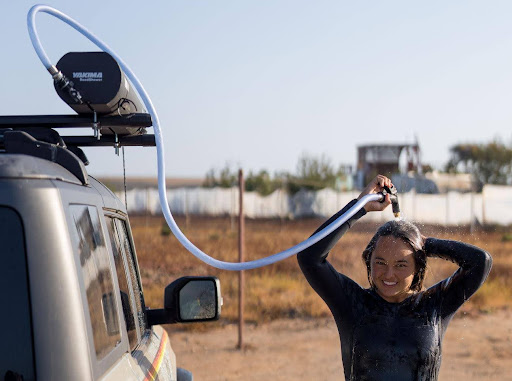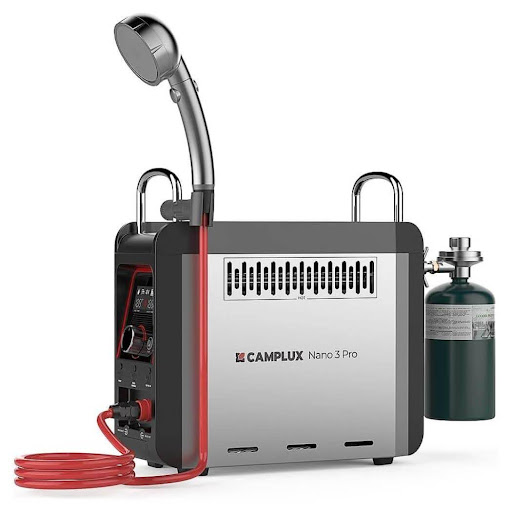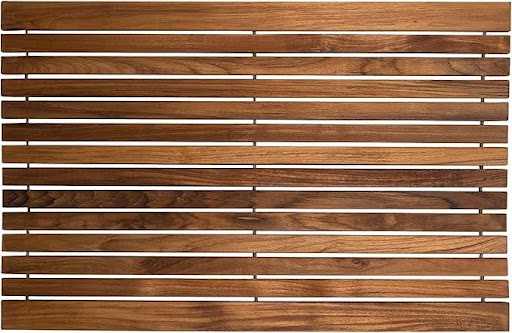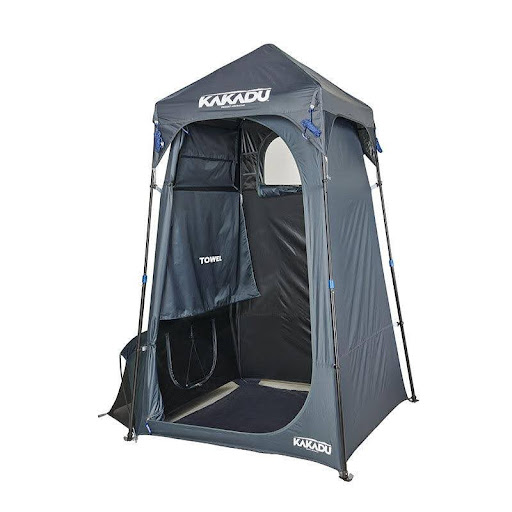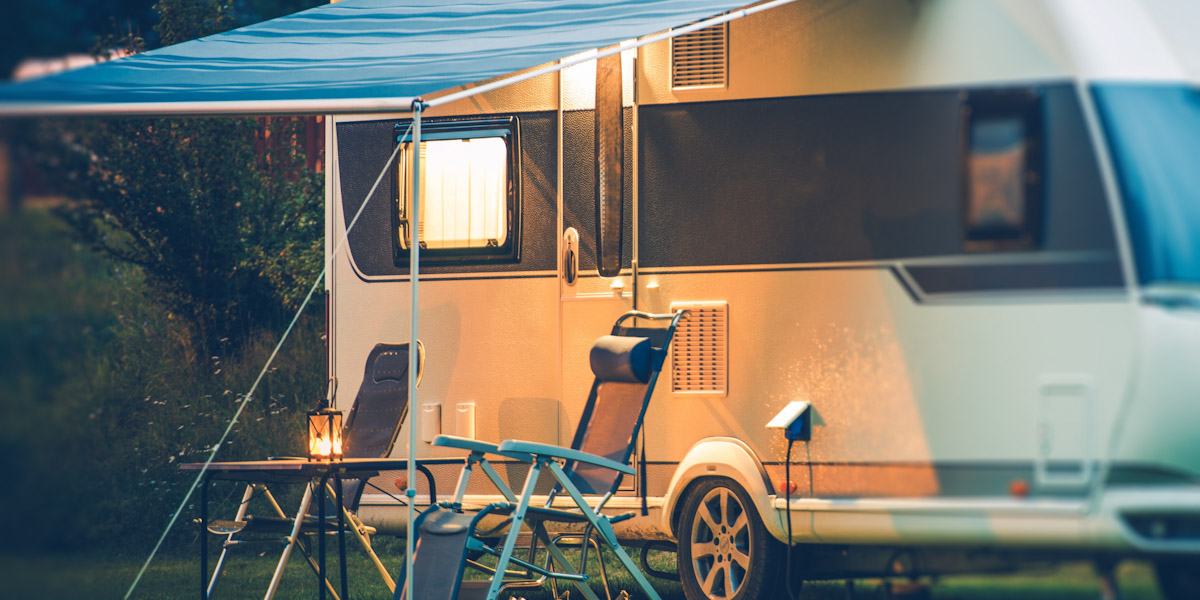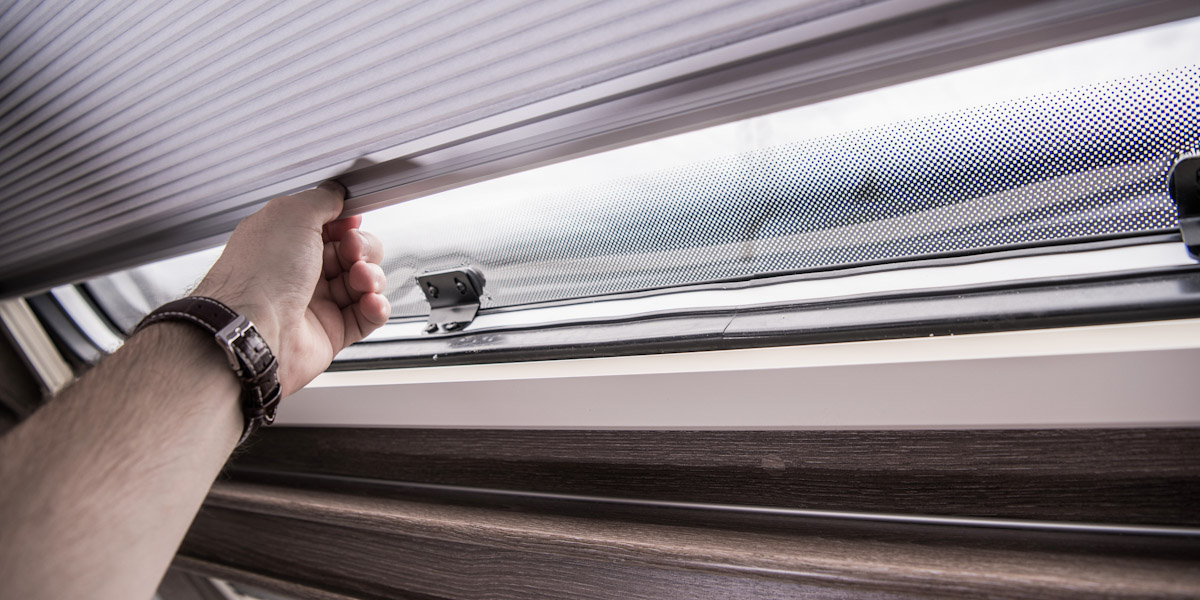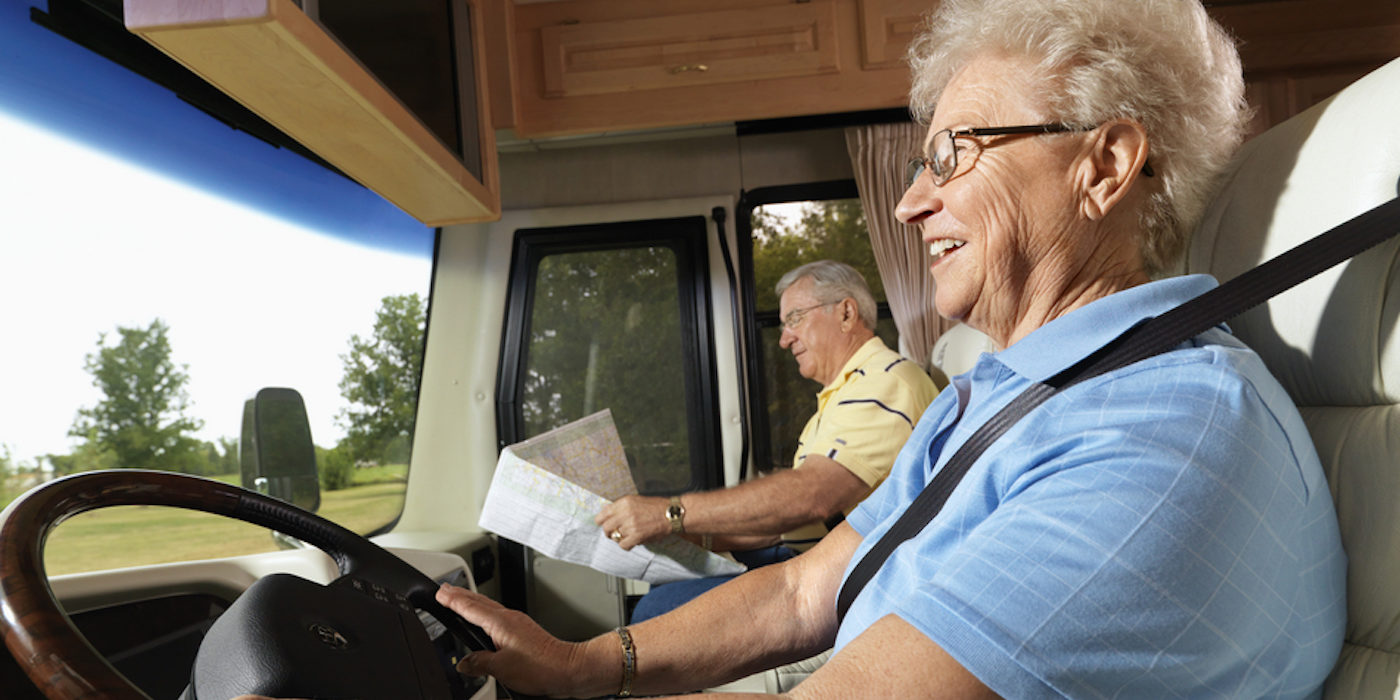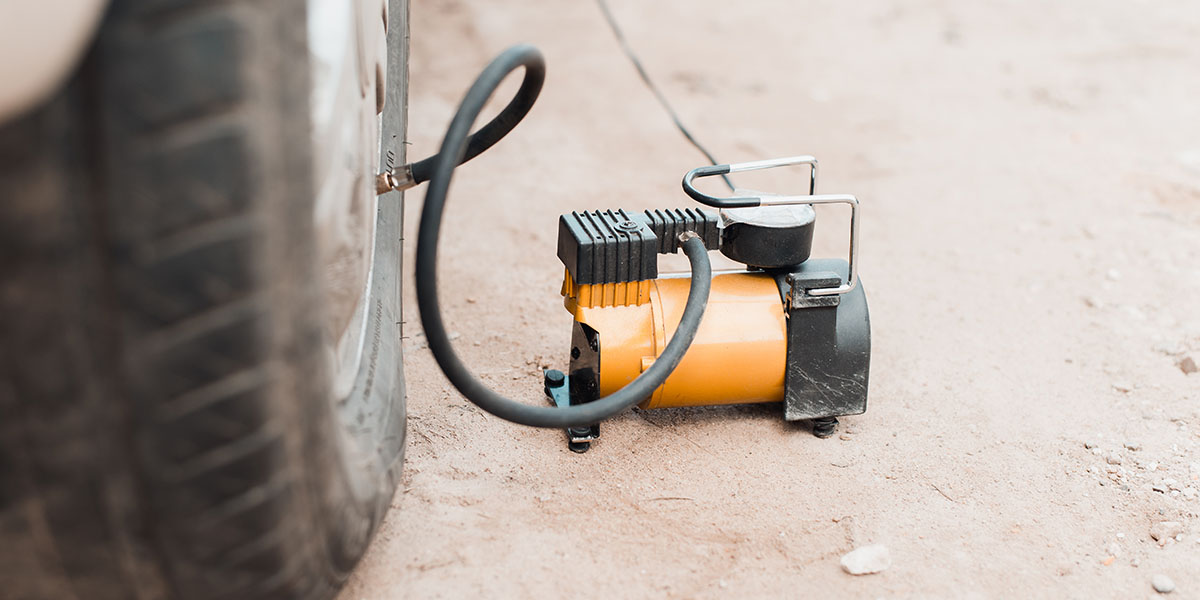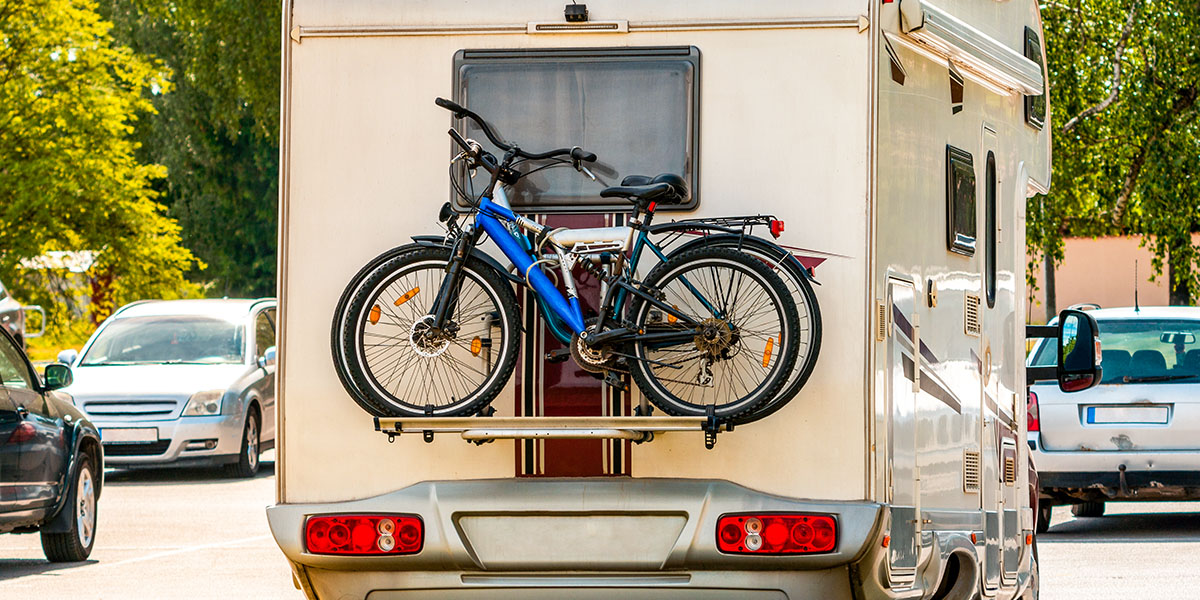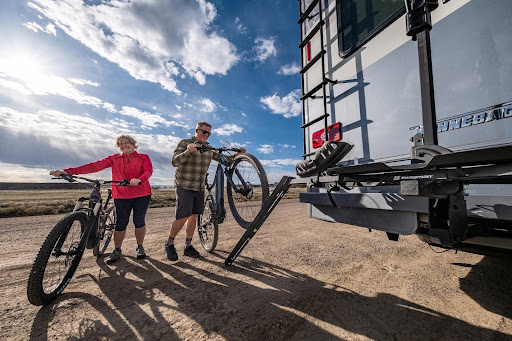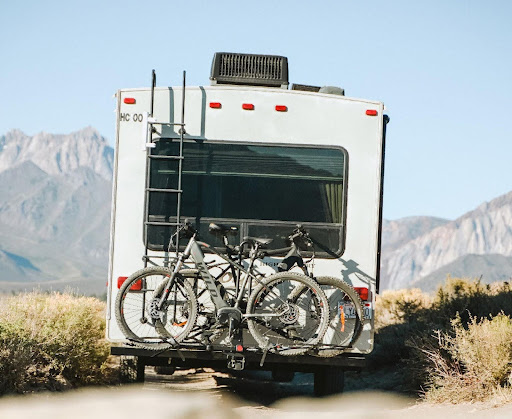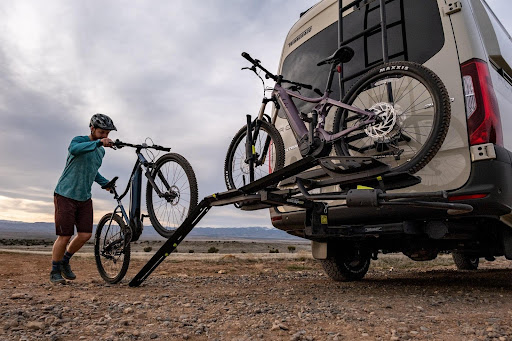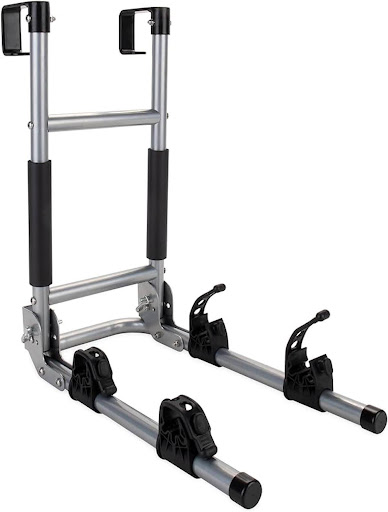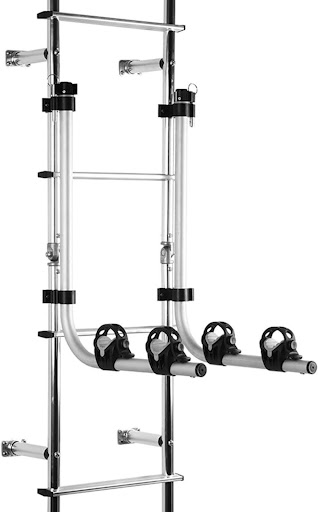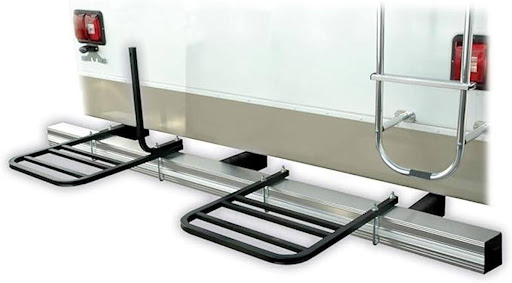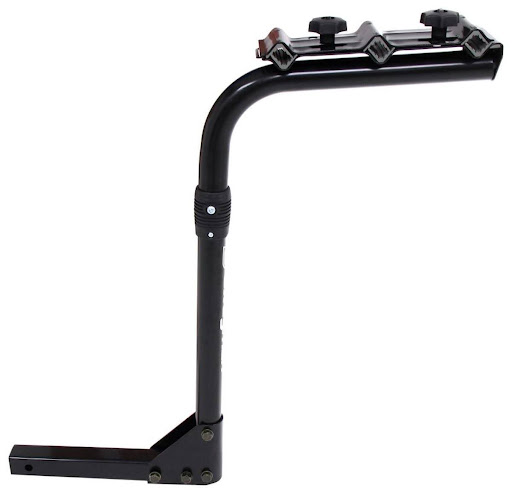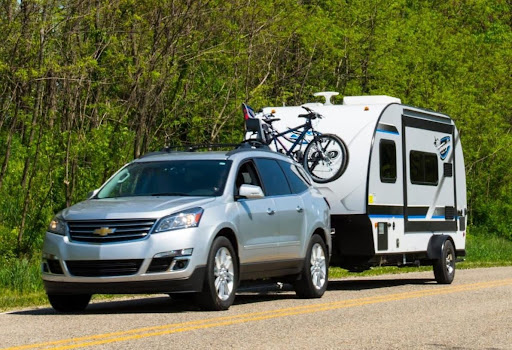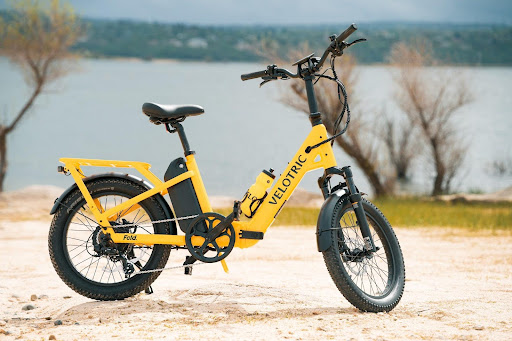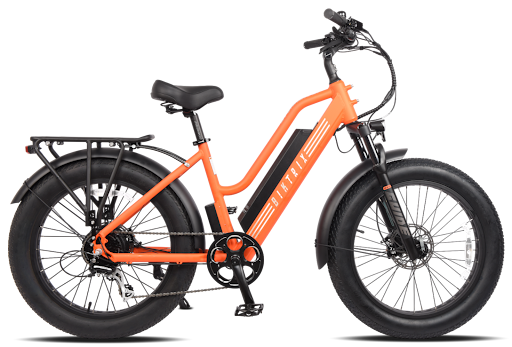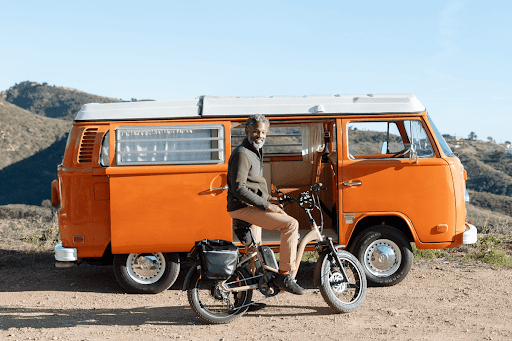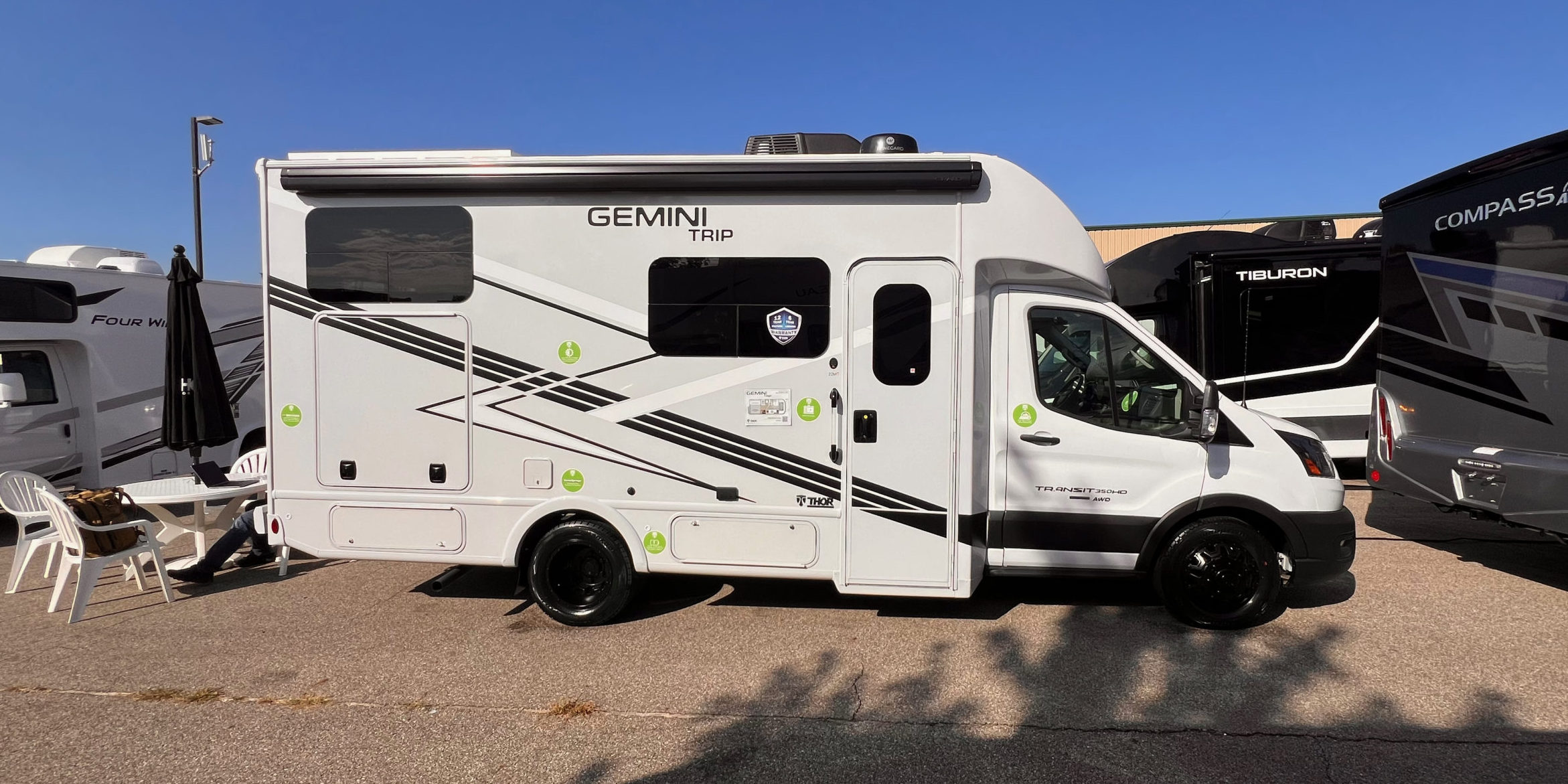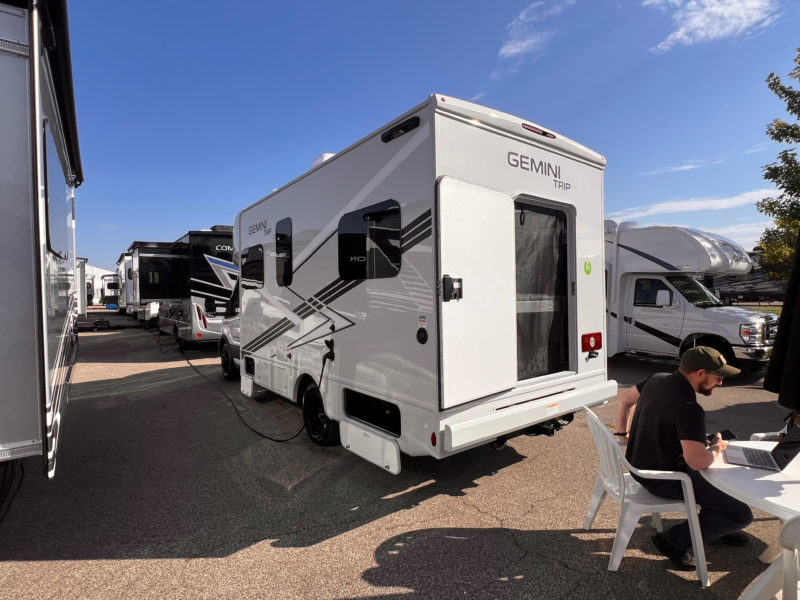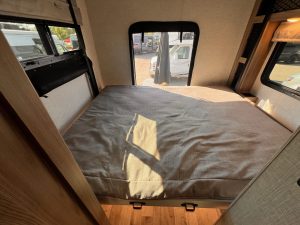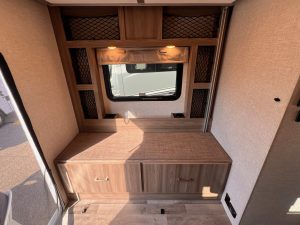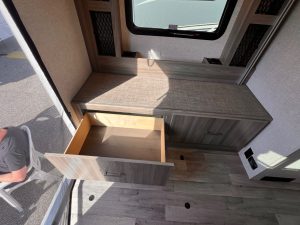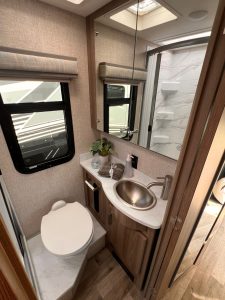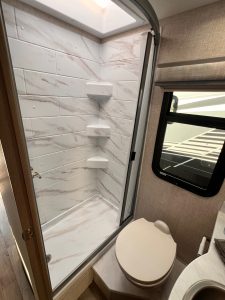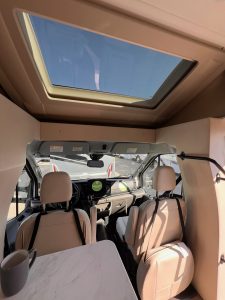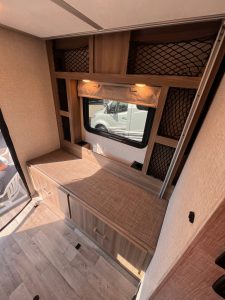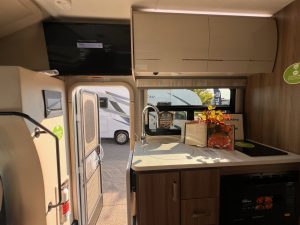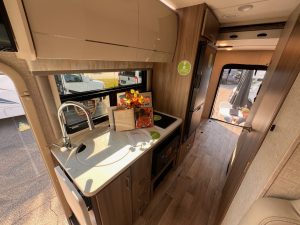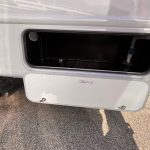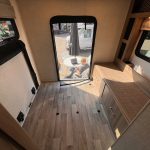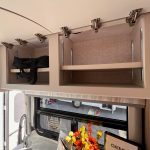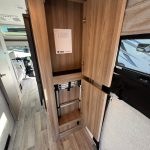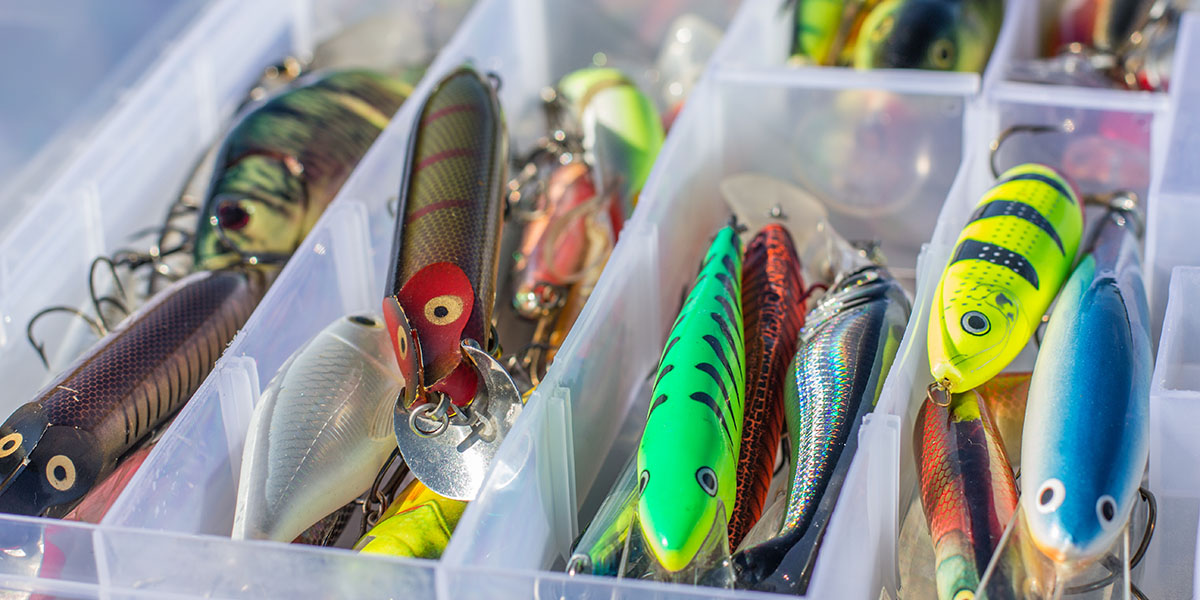Whether we’re boondocking in the backcountry or camping in a state park, odds are that were going to be at least a little dirty by the end of the day. Dirt, dust, grime, sandy feet, and muddy paws are all part of the camping fun. Even so, that doesn’t mean your RV has to get dirty too. Many models come equipped with an outdoor RV shower. This enables everyone (including the dog) to get cleaned up outside. (That way, the outdoors stays outside the RV.)
But what if your RV doesn’t have a built-in outdoor shower? The good news is that there’s now plenty of innovative outdoor RV shower gear available to create an impromptu shower space wherever they happen to be.
So, let’s take a look at some of the best outdoor RV shower accessories, so you can rock the outdoors and rinse it off before coming into the cabin.
4-Gallon RinseKit Cube Portable Shower
The RinseKit Cube portable shower is a pressurized shower system that’s perfect for rinsing gear or taking a shower wherever you happen to be. The system uses a rechargeable 12-volt, 5-amp-hour battery to give you the water pressure you need for rinsing grime off sporting gear. Fill its four-gallon tank with hot water, and you have everything you need for a satisfying outdoor RV shower.
Features
- Battery-powered pressurization
- 4-gallon capacity
- Simple fill-and-use function
- Military-grade materials for outdoor conditions
- Ergonomic handle and built-in tie downs
- Waterproof control panel (for water temperature and battery life)
- USB and 120-volt ports
- Requires infrequent charging
- 7-foot-long hose and 5-setting spray nozzle
Specs
- Dimensions: 12 inches (L) x 12 inches (W) x 14 inches (H)
- Weight: 15 pounds empty; 47 pounds full
- External materials: Military-grade, UV-protected high-density polyethylene (HDPE)
- Internal battery type: AGM 12-volt, 5-amp-hour battery
- Price at RinseKit.com: $389.95
Yakima RoadShower
The Yakima RoadShower mounts on the vehicle cargo rack where it uses the sun’s energy to create hot water so you can shower with hot, pressurized water when you’re boondocking off the beaten track or on an overlanding adventure.
Features
- Available in three sizes: 4, 7, and 10 gallons
- Welded aluminum construction with powder coat finish
- Large top cap for easy filling
- Air tank able to be pressurized with either a Schraeder valve or a garden hose
- Garden hose adapter that harnesses pressure from outdoor water supply, filing and pressurizing at the same time
- Includes a stick-on thermometer strip that lets you know the water temperature
- Mounts on the roof rack of any vehicle with universal mounting hardware system
- Includes two water outlet ports, one on each end for convenient water access
- Included hose lengths: 4-gallon and 7-gallon, 55 inches; 10-gallon, 81 inches
- Limited 1-year warranty
Specs
- Dimensions: 55 inches (L) x 2.4 inches (W) x 5.74 inches (H)
- Weight: 26.6 pounds
- Minimum crossbar spread: 20 inches
- Maximum crossbar spread: 50 inches
- Price at Yakima.com: $579.00
Camplux Nano 3 Pro Portable Propane Hot Water System
Tankless hot water in an RV offers the convenience of an endless supply of hot water whenever you need it. (All without having the extra bulk of a conventional water heater.) The Camplux Nano 3 Pro Portable Propane Hot Water System — let me take a breath after that name — brings the same convenient efficiency to the outdoor camp shower. Imagine boondocking or overlanding and being able to have a hot shower at the end of a hot, sweaty day of hiking, rock climbing, or mountain biking. Just connect the heater to any water supply (it could even be a natural body of water) and a propane bottle, and you’ve got as much hot water as you need to get rid of the grime.
Features
- Instant hot water for showering, as well as dishwashing or cleaning
- 20,500 Btus with a quick temperature rise of 45 degrees Fahrenheit (25 degrees Celsius)
- Internal pump delivers water at a sustained pressure
- Rapid charging, 4,000-millampere-hour batteries allow for 90 minutes of operation (and can be used while being charged)
- Lightweight, space-efficient design
- Four power supply methods: Li-ion battery, portable power station, 110-volt AC outlet, and 12-volt car cigarette lighter
- Kit includes one battery-powered camping water heater, one 12-volt submerssion water pump, one 12-volt DC cord, one gas regulator, one shower bracket, one shower head, and silicone water pipe
- Auto-shut off at 122 degrees Fahrenheit with auto-restart when water temperature decreases (Additionally, has auto-shut off when the unit is tiled excessively and auto- shut off after two minutes of no water flow)
- Multiple knobs for intricate control
- Adjustable water flow uses 3.8-8 gallons of water for a -five minute shower
- Quick connections for hot and cold water ports
Specs
- Weight: 14 pounds
- Maximum Energy Output: 20,000 Btus
- Material: Stainless ssteel
- Price at Camplux.com: $399.99
Nordic Teak Wyoming Oiled Teak Shower and Bath String Mat
A shower mat is a must have for outdoor showers when you’re camping. That’s because without something between your feet and the ground, you can end your shower standing in at least as much mud as you just washed off. Out of all the shower mats available, a roll up teak shower mat, like the Nordic Teak Wyoming oiled teak shower and bath string mat, could be the perfect mat for use with an outdoor shower.
Teak is a naturally water resistant hardwood that will outlast many other portable shower mats. Not only that but teak wood shower mats offer a much more sustainable alternative to plastic shower mats for those who are trying to cut down their use of plastics. (Having the ability to roll up instead of folding makes it easy to pack in your RV or vehicle.)
Features
- Naturally water resistant and durable
- Mold-and-mildew resistant
- Maintains color over time
- Oiled finish
- No-slip surface
- Luxurious spa feel under foot
- Easy cleaning and maintenance
Specs
- Flat dimensions: 31.4 inches x 19.6 inches
- Weight: 9.04 pounds
- Material: Teak
- Price on NordicTeak.com: $ 89.95
Kakadu USA Outback Shower Tent
Once you have the shower (and the mat to stand on), you’ll still be in need of one thing — and that’s privacy! Yes, you could make use of strategic and clever placement of tarps to gain some privacy while you shower. (But come on.) Getting a pop up shower tent simply offers more privacy, usually featuring a window so you can enjoy your favorite views while you clean up. The Kakadu USA outback shower tent goes up quickly, and has features like a towel rack, places to stash soaps and shampoos, as well as a covered spot to put your portable outdoor shower system.
Features
- Quick setup
- Light blocking fabric for better privacy
- Multiple shower hose ports and bump out to house shower system
- Clip-in floor with drain mesh to help water drain efficiently
- Internal toiletry organizer
- Towel rack
- Toilet paper holder for convenience on the go
- Water-safe laundry hamper
- Locking zipper so you can shower in peace
- Durable
- Optional rain fly
- Guy ropes for extra stability
Specs
- Dimensions: 48 inches x 48 inches x 83.8 inches
- Pack-down dimensions: 7.5 inches x 7.5 inches x 39.7 inches
- Weight: 9.4 pounds
- Material: 75D Ripstop® polyester with BlockOut® coating
- Price at Kakadu USA: $199.00
The Right Outdoor RV Shower Gear
Having a outdoor RV shower does more than just help you shed the dust and grime of a great day outdoors. Quite frankly, wherever you are, an outdoor RV shower can transform an act of hygiene into an opportunity to reflect on the day’s activities amidst nature’s grandeur — all while keeping your cabin clean. We call that the sweet spot.
